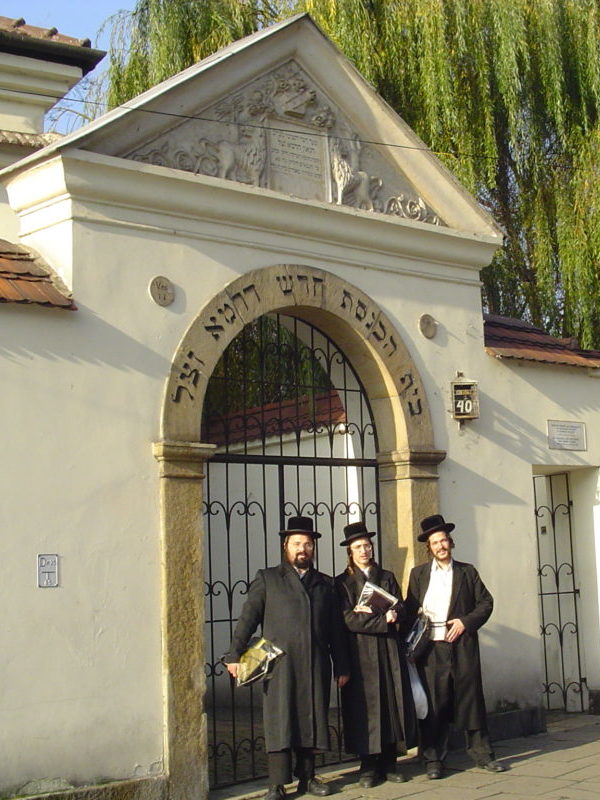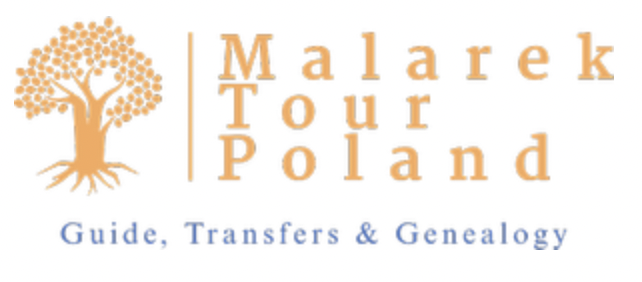Jewish Krakow Private Tour
Private tour of Kazmierz Jewish Quarter , Jewish Ghetto, Oscar Schindler’s Factory Museum, site of Concentration Camp Plaszow with guide and Mercedes van to your disposal.
Local Auschwitz Guide
Experianced educator and certified guide by State Auschwitz Museum
Private Transportation
Pick up from your hotel, bus or rail station, Katowice Airport. Comfortable air-conditioned Mercedes and assistance English speaking driver/guide
Commemoration Visit
Day of reflection in the largest cemetery in the world guided tour up to 4 hours of Auschwitz Memrorial and Museum
6 hours tour
Up to 4 hours visit of Memorial and Museum Auschwitz and Birkenau, 2 hours total travel time from and to Katowice
Number of persons
From 1 to 8 or 9+
Details & itinerary
The tour begins in Kazimierz – Krakow’s Jewish Quarter the best preserved Jewish district in Europe. We will visit a neo-Romanesque synagogue called the Temple. Then trough Nowy Square- the former commercial center of Kazmierz – and on to the Kupa, Isaac, Wysoka (High) and Stara (Old) Synagogues. We reach Szeroka Street, the heart of Kazimierz, where we can admire the Remuh Synagogue- the final one on the tour – which is use. There is a unique 16th- century cemetery adjoining the synagogue. Later we will retrace the key sites of Spielberg’s work – Schindler List, site of former Jewish Ghetto in Podgorze, Pharmacy Under the Eagle: Ghetto Museum, Schindler’s Factory, sites of Plaszow concentration camp.
Schedule
- Kazimierz – Krakow’s Jewish Quarter
- Neo-Romanesque synagogue The Temple.
- Nowy Square- the former commercial center of Kazmierz
- One of seven Krakow’s synagogues Kupa, Isaac, Wysoka (High) and Stara (Old) Synagogues.
- Szeroka Street, the heart of Kazimierz,
- renovated Remuh Synagogue
- 16th- century Old Jewish cemetery
- Plac Bohaterow Getta / Ghetto Heroes Square.
- Museum Pharmacy Under the Eagle
- Lwowska Street the main street of Podgorze district
- grounds of the former concentration camp at Plaszow
- monument in Plaszow erected to commemorate the people of all nationalities
- site of Schindler Factory well known from the movie Schindler’s List
What You Should Bring
Donec rutrum congue leo eget malesuada. Vestibulum ac diam sit amet quam vehicula elementum sed sit amet dui. Nulla porttitor accumsan tincidunt. Donec sollicitudin molestie malesuada. Vestibulum ante ipsum primis in faucibus orci luctus et
Best Times for This Excursion
Your content goes here. Edit or remove this text inline or in the module Content settings. You can also style every aspect of this content in the module Design settings and even apply custom CSS to this text in the module Advanced settings.
Frequently Asked
Donec rutrum congue leo eget malesuada. Vestibulum ac diam sit amet quam vehicula elementum sed sit amet dui. Nulla porttitor accumsan tincidunt. Donec sollicitudin molestie malesuada. Vestibulum ante ipsum primis in faucibus orci luctus et
For Booking & Inquiries
For more details of your visit, availability and prices please contact us.
Call Us
EMail Us
History Of Krakow’s Jews
Jews come to Krakow in the late 13th century. Kazmierz was established in 1335 on the outskirts of Krakow by King Casmir II the Great. It he past it was a separate town, but nowadays is one of the Krakow’s districts. Today’s Kazmierz is well known because of the former Jewish town. King John Olbracht settled the Krakow Jewry in the end of the 15th century in eastern part of Kazimierz where social and cultural life was concentrated.

For a nearly six centuries they create extraordinary thriving Jewish community with a big religious and academic centre: the Talmudic and Yeshiva schools. It was one of the largest Yiddish culture centres in Poland. By the 17th century cultural Jewish life was flourishing and seven main synagogues were build during this period as the Alte Schul and the Rema Synagogue. Between 1655-57 was a hardship period for the Jewish community because of the Swedish invasion and occupation. In the late 17th century the anti-Jewish riots followed in quick successions. The 18th century was a period of trade battles between the people from Krakow and Jews from Kazmierz. Kazmierz became part of Austrian Empire in years 1772-1776 but Krakow stayed as a part of Poland. During this time Jews who traveled to Krakow had problems to trade there. In 1776, the king allowed to growth Jewish trade rights. Many wealthy Cracow Jews migrate to Warsaw. In 1796 Krakow came under Austrian control and later Kazimierz became a district of Krakow in early 19th century. It started to be a good time for Kazmierz and signal to a slowly redevelopment of the district new roads, houses. By 1833 the Jewish population stood at 10,820. In 1830 Jewish elementary school was opened. The first synagogue for reformed Jews was opened in1844. In 1867 equal citizenship right were given to the Jewish population of the Krakow and Jews had the same rights to trade, work and settle in Krakow. In 1900, Cracow had a Jewish population of 25,670 and it was constantly rising and in 1910 the there was 32,000 and cultural life arose with the them. During the late 19th century the anti-semitism movements and pogroms broke out. The youth Jews were strong enough to protect themselves against the demonstration. Population of Jewish people was still to growing and in 1931 reached 56,800. Krakow became a main place of Jewish life in Poland.
Times of Shoah
The Germans occupied Krakow on September 6, 1939. The persecutions of Jewish people started: depriving them from wealth, limitation of personal freedom, obligation to work from 14 to 60 years old, order to sign people and businesses with David star, prohibition on freedom movement around the city and using public transport. In April 1940 Hans Frank the general governor demand to driven out Jews from Krakow. He decide that Krakow the capital of General Gubernatorial has to be a city free of Jewish People. In October 1939 after this decision stood only 16,000 Jews because it was indispensable number of people to allowed the city to function efficiently.

During this time Germans decide to build the working camp in Plaszow, its name was changed for Concentration camp in January 1944. This camp was build by Jewish people from ghetto on the place of two Jewish Cemeteries in Plaszow the chef of the camp was Amon Goeth. On 13 and 14 March 1943 the ghetto was liquidated the old, the sick and children were killed or they were taken to Auschwitz – Birkenau. Those able to work were taken to the forced labour camp in Plaszow. During the ghetto liquidation around 3,000 people were killed. Approximately 3,000 to 5,000 of Krakow’s Jews survived the Holocaust. In 1950 there was 5,000 Jewish people registered in Krakow, but soon most of them emigrate mostly to Israel in the next few year because of the anti-Zionist policies of the post-war communist authorities. After the tragedy of WWII and the extermination of Jews by the Nazi occupation, Kazmierz become deserted and fell into ruin for many decades. The current explosive development of this part of the city was caused by changes in the political system at the end of the 1980s and 1990s. Kazmierz made its way to big screen thanks to Steven Spielberg’s Oscar – winning film Schindler’s List, which was shot here. The first Festival of Jewish Culture was organized in the beginning of the 1990s in principle focuses on the history and traditions of the people that used to live here.

In 3rd March 1941 Otto Wachter decided to establish a Ghetto in Krakow. The German shut those who remained in a ghetto created in the right bank of Vistula in district Podgorze. Until 20 March 1941 which was the final date there were 15,000 Jews. They were crammed into 320 buildings there was a standard 2 square meters for one person. The ghetto was overpopulated, few families in one flat. All the Jewish institutions were removed to the ghetto as the council, the hospital, the Jewish Mutual Aid Society, the orphanages, a post office, a pharmacy and an agency of the German Employment Office. All the shop-signs were change from Polish to Yiddish. In April 1941 ghetto was enclosed by a 2-3 meters high wall with four gates, the top of the wall was resamble to Jewish tomb. Main gate has a huge Star of David and a Yiddish inscription, Jidisher wojnbecitk – Jewish housing estate. After the conference in Wannsee in January 20 1942 where highest members of SS decide about Final Solution, the deportation started. In June and October 1942 there were mass deportations from the ghetto to the death camps. About 11,000 Krakow’s Jews were driven out to Belzec extermination camp. Every time the are of the ghetto was reduced. On the beginning of December 1942 the ghetto was divided to two parts: A for people who had a permission to work and ghetto b for the rest of people. This was a last preparation for ghetto liquidation.

Krakow Ghetto, Schindler’s Factory and Plaszow Camp.
Plac Bohaterow Getta / Ghetto Heroes Square. Ghetto Heroes Square before the outbreak of World War II was called Concord Square. After the war (in 1948) its name was changed to commemorate residents of Krakow ghetto and the events that unfolded here in the years 1941-1943. In 2005, it was converted into a memorial. The redevelopment project appealed to the of the book by Tadeusz Pankiewicz, “Pharmacy in the Krakow Ghetto”: “At the Concorde Square decays a big amount of cabinets, tables, dressers and other furnitures, which were transferred from one place to another “.
Museum Pharmacy Under the Eagle During the existing of the Ghetto the building was an only pharmacy there. The owner was the only Pole allowed to live and work in Ghetto. Tadeusz Pankiewicz decided to leave his business in the Ghetto area, he and his personnel risked their lives to do every think what he can to help Jews. He received the medal from Yad Vashem ‘Righteous Among the Nation’. Nowadays inside the pharmacy is a small exposition about the life in the ghetto with original movies.

Concentration camp at Plaszow.
On the grounds of the former concentration camp at Plaszow, there are several memorials commemorating the events of 1939-45. So-called Gray House on Jerusalem street no.3. It was the house in which lived Nazis famous for they cruelty Ssmen Hujar, Zdrojewski, Landsdorfer, Ekert and Glaser. In the basement was a punishment prison and torture chambers. Ruins of Jewish Community pre-burial hall, were Jews hid liturgical objects for the Krakow syangogues. Remains of the Podgorski Jewish Cementary where only one tom and several tomb bases survived. Memorial tombstone of burial place of Sara Schenirer, founder of the Bet Jakow school for girls from Jewish Orthodox families. The first school was established in Krakow in 1917. Later this type of schools was established in all over Poland, in USA and many European countries. On the Heltman street there were located many houses of German officers as well as a Red House villa of camp commandant Amon Goeth, which stands still today. Very close to to the house is the monument erected in 1984, is dedicated to the memory of thirteen Poles murdered by the Nazis, in the first mass execution of 10 September 1939 . Next to it there are anti-aircraft shelters carved into the rock by prisoners. Hujarowa Gorka is the hill with the cross, it is the site of the mass executions and a place where Nazis exhumed 10,000 Jewish bodies to hide their crimes. Further there are two smaller monuments. One the right side is a monument donated by the Krakow Jews, in memory of those killed at this point Polish and Hungarian Jews. On the left, there is a monument erected in 2000 commemorating Jewish women from Hungary, who in 1944 passed through the camp on the way to the gas chambers in the concentration camp at Auschwitz-Birkenau. The largest monument in Plaszow erected to commemorate the people of all nationalities, murdered by the Germans in the Plaszow camp was unveiled on September 4, 1964 and towers on a hill. It is composed of five characters torn by the gap at the level of the heart. The inscription on it reads:. Memorial of martyrs murdered by the Nazi genocide in the years 1943-1945 “. Liban Quarry before the II World War was owned by Jewish people Liban and Ehrenpreis who began to take out limestone from here in 1873. During Nazi occupation it was a very cruel penetial camp from 1942 to 1944 for 800 Poles. In 1993 Liban Quarry was used by Steven Spielberg as the set of all scenes from Schindler’ List that take place in the Plaszow concentration camp.
Krakow Under Nazi Occupation

Lwowska Street Once it was one of the main street of Podgorze district. Now, after the changes in the tram line communication system is a peripheral street. In March 1943, this street was used to lead column Krakow Jews escorted by German soldiers to the concentration camp at Plaszow. On the way there is one of the last fragments of the Ghetto wall characterisitic several meters high wall topped with arches, typical from Jewish tombstones. In 1983 the commemorative plaque was fixed in with the inscription in Polish and Yiddish, “Here lived, suffered and died at the hands of. Hitler’s executioners. Therefore led their final journey to the death camps. Fragment of the Jewish Ghetto wall1941-1943.” [The second part of the ghetto wall is located at the back of the primary school at Limanowskiego street, visible from the school yard and the street.
Schindler’s Factory Museum
A must-visit museum re-opened in June 2010 in the orginal site of Schindler Factory well known from the movie Schindler’s List , this is one of the most interesting museums in Krakow.
The main exposition is ‘Kraków During Nazi Occupation 1939-1945’ it shows: the outbreak of the war and beginning of Nazi German occupation – nazi terror – elimination of Jewish residents from city – Krakow Ghetto – Plaszow Concentration Camp
History of Plaszow Concetration Camp
In July 1942, the construction of barracks began as a main purpose to locate Jews after the Krakow’s Ghetto liquidation. It was located on the area of Podgorze Jewish municipal cemeteries close to the Jerusalem street and Abraham street. This was another Nazi German camp built in occupated Poland. Initially it was a forced labor camp but since January 1944 was converted into a concentration camp. From 27.11.1942, were located here Jews who worked in military companies. In March 1943, there were 2,000 Jews. In 13.02.1943, Amon Goeth become a camp commandant. After the liquidation of the ghetto in Podgorze most of the people who survived were send to Plaszow in this period number of prisoners increased to 8 000, and later on after liquidation of different ghettos around the Krakow area the number of prisoners rised to 10 – 12 000.
In the first stage of its existence, the camp was created as a collection camp for Jews prepared for deportation to the East. As the number of prisoners increase in the camp, Plaszow became a camp Jewish prisoners who worked in different German industrial companies, and since May 1943 also Polish prisoners were included in the Plaszow forced labor camp. In the summer of 1944, when the the eastern front began to approach to Poland lands, Germans began to liquidate the Plaszow camp. From July 1944 they began the deportations of prisoners to the deaths camps. By October 1944, the Germans completed covering the remains of the camp. The last transport of prisoners from Plaszow to Auschwitz left on 17/01/1945
About 25 000 unnumbered prisoners throughtout by the camp in Plaszow, during the period of its existence – for them the Plaszow was only a stage on the way to other places of extermination.
There are seven main Synagogues at Kazimierz.
The Old Synagogue This is the oldest of existing synagogue in Poland, the former synagogue was built at the beginning of the 15th century had connection to other gothic synagogues built in Worms or Prague. At that time it was only for men. In 1570 the architecture was reshaped for renaissance by Matthew Gucci from Florence. Later the women’s prayer room and a Kahal house was added. After the First World War the building was restored by Zygmund Hendel. During the Second World War the synagogue was used as the storeroom and its interior furnishings were destroyed and pillaged, not a long time after the roof was destroyed. After the war the synagogue remained in ruins. In 1956-59 was rebuilt by the City of Krakow Historical Museum to serve as a Jewish history museum. In side you can see also a reconstructed bimah, a Barouqe collection box, a Torah Ark, various ritual artifacts and everyday utensils.

Izaak’s Synagogue This is the biggest synagogue in Kazimierz. It was build in mid-17th century in Baroque style. It was funded by Izaak Jakubowicz a rich merchant and banker. The building is decorated with arcaded windows and fine stucco-work. In side there are some reconstructed 17th century inscriptions on the walls and stone arch. During the Second Ward War the interior with the bimah was destroyed by the Nazis. After the war it has been gradually renovated since the 1980s. In one of the rooms there is a shop with kosher food.
Tempel Synagogue
This is the newest synagogue in Kazmierz. It was built in 1860-62 for the Association of Progressive Israelites and the services were delivered in Polish and German. The interior is very rich the ceilings are adorned witch stuccoes and frescoes in an Oriental style. The stained glass windows which were funded by Krakow’s families in 1894-1925 add charm to the synagogue interior. After Second World War it was used for Holocaust survivors. It was renovated in 1995 by The World Monument Fund and later opened for visitors.
What to Visit Jewish Krakow?

Remuh Synagogue and Cemetery They are situated on a small area of 4,5 hectares and Synagogue is the smallest Synagogue in Kazimierz. It was build in 16th century by Stanislaw Baranek as the second in the Jewish Kazimierz . It was founded by Rabbi Izrael ben Jozef , the father of Moses Isserles who was called Remuh. The synagogue courtyard entrance leads through the gate with a Hebrew inscription “ The New Synagoge of Remu blassed memory”. Today’s architectural shape and appearance of the interior are after the renovation in 1829. During the Nazi occupation synagogue was used as the storehouse and all valuable objects was stolen or destroyed. In 1957 thanks to the Jewish Denominational Council the synagogue was renovate and some of the interior decoration reconstructed like the bimah. The Remuh Synagogue is still in use for religious worship.
Next to the synagogue lies the old Jewish Community cemetery which with numerous historic tombstones. It is a resting place of Jews who had immense religious and historical value. Every year this cemetery is visited by Jews from different countries that came to pray by the graves of the famous Krakow Rabbis. The most venerated site is the tomb of Rabbi Moses Isserless Remuh who died in 1572 18 Ijar ( April/May).
During the Second World War the cemetery was destroyed, most of the tombstones were broken and the place was change for rubbish tip. After the Nazi occupation only few tombstones were saved, one of them as that of Moses Isserless this was treated as a further proof of saintly Rabbi’s miraculous power. In 1950 during archaeological works, hundreds of tombstones as well as many broken fragments were found there. Nowadays most of them were put back in place on the surface, many of them are adorned with intriguing ornamental motifs. Many fragments of matzevahs were embedded in the wall which creates mosaic Wailing Wall.
What are you waiting for?

